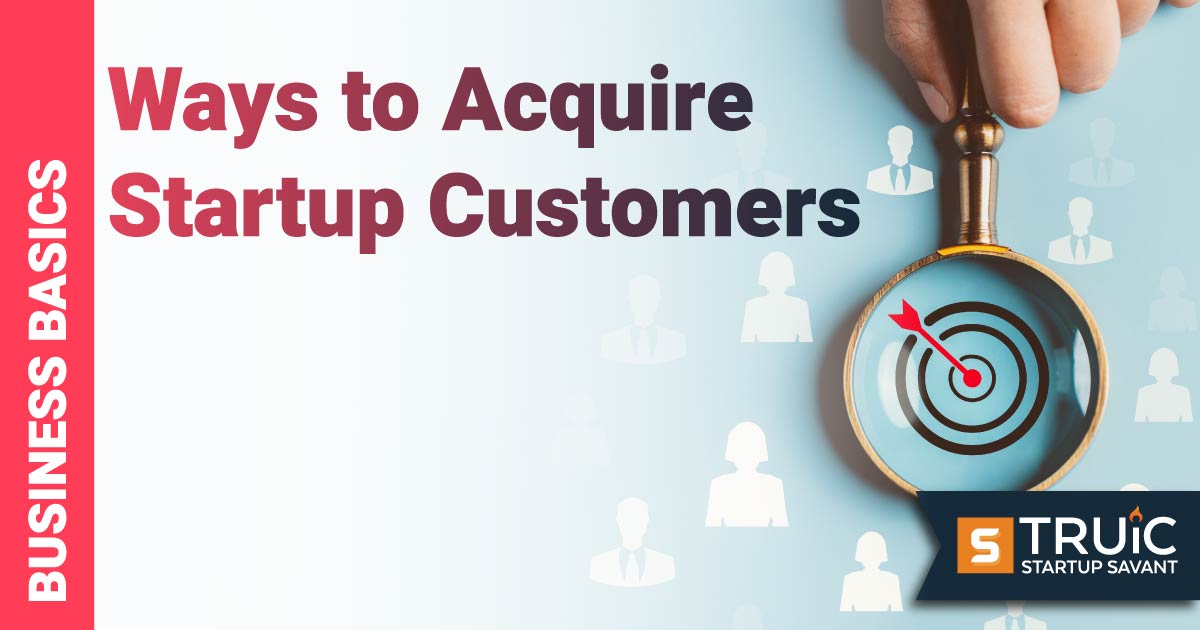How to Acquire the First Customers for Your Startup

Last Updated: By TRUiC Team
Once you have successfully launched your startup company, figuring out how to attract as many paying customers as possible becomes a goal that will remain vital throughout the life of your company. However, in the early stages of a startup, succeeding at attracting any customers at all can sometimes feel like an impossible challenge. To help you acquire the first customers for your company in order to start generating initial revenue growth, we'll explore six actionable tips that you can leverage to start attracting customers to your new business.
Actionable Ways to Acquire Startup Customers
1. Know Your Target Market Inside and Out
One of the most important components of digital marketing is ensuring that you are targeting your marketing efforts to the demographics of customers most likely to purchase your products or services.
Today, marketing platforms such as Facebook Ads and Google Ads allow you to target your campaigns to highly specific groups of customers. If you want to send your ads out only to middle-aged male golfing enthusiasts who live in Vermont, for example, these tools make creating such a targeted campaign as simple as clicking a few buttons.
Before you can begin leveraging targeted marketing campaigns or even begin devising the messaging behind your marketing efforts, it is first essential to thoroughly define your target market. This starts with performing market research as well as knowing your own product and brand inside and out before developing profiles of your company's ideal customer that you can use to guide both the messaging and targeting of your marketing campaigns.
2. Understand the Cost per Customer
In order for marketing to be effective, your campaigns need to bring in more money than they cost. The importance of this is simple enough to understand, but organizing your marketing efforts in order to maximize ROI first requires you to understand your average cost per customer. Consider the fact that not all marketing campaigns are designed to lead to direct conversions.
While it's easy enough to measure the ROI of your campaigns when the goal of those campaigns is to generate sales, ROI can become much more difficult to calculate when the goal of your campaigns is to generate leads or raise brand awareness. This makes it important to calculate an overall average cost per customer that takes into account all of your money spent on a given campaign.
Understanding your average cost per customer then comparing that figure to the average lifetime value of each new customer your startup acquires will allow you to determine how much room you have in your marketing budget in order to generate a positive ROI.
3. Understand Lag Time
When you launch a new company, you will want to keep in mind that the "return" in "return on investment" is not typically something that can be immediately acquired. While marketing campaigns designed only to generate sales might yield immediate return, other types of marketing necessitate a certain lag time before you will actually start seeing results. This applies not only to marketing campaigns but also to any overall sales or marketing strategy that you employ.
In other words, making a change to how your company goes about attracting customers won't always yield immediate results. Understanding that there is often a lag between cause and effect when it comes to marketing and sales is an important principle to keep in mind as you go about trying out new approaches and strategies.
4. Research Your Competitors
If you are looking for the best way to hone the messaging of your company's marketing content, there's no better place to start than researching your competitors. While it's certainly a good idea to differentiate yourself from your competitors whenever possible, there's also no shame in borrowing what has worked well for others.
Once you have identified successful companies whose target market is similar to your own, researching the messaging they employ in their marketing content can be a great way to help you determine the messaging that will work best for your own company.
5. Choose the Right Marketing Channels
There is no shortage of marketing channels for startups to leverage, from social media platforms to email and even the more conventional marketing channels such as print, radio, billboards, and TV ads. It would be going too far, perhaps, to say that your choice in marketing channels is a matter of personal preference, but it is true that no one channel is head and shoulders above the rest.
In most cases, the most successful type of marketing is omnichannel marketing, which utilizes multiple marketing channels to develop a cohesive marketing strategy. However, it is important to consider the advantages and drawbacks that each marketing channel entails as well as consider how the marketing channels you choose can be combined into an omnichannel marketing strategy.
6. Use Your Existing Network
While it is no doubt essential to create a strategy for attracting customers that extends well beyond your existing network of friends, family, and colleges, there is nothing wrong with counting on this network to get the ball rolling. When all you need is just a few customers to break the ice, reaching out to those in your existing network can be a great way to take that all-important step from a newly launched company to a company that is actually generating revenue.


